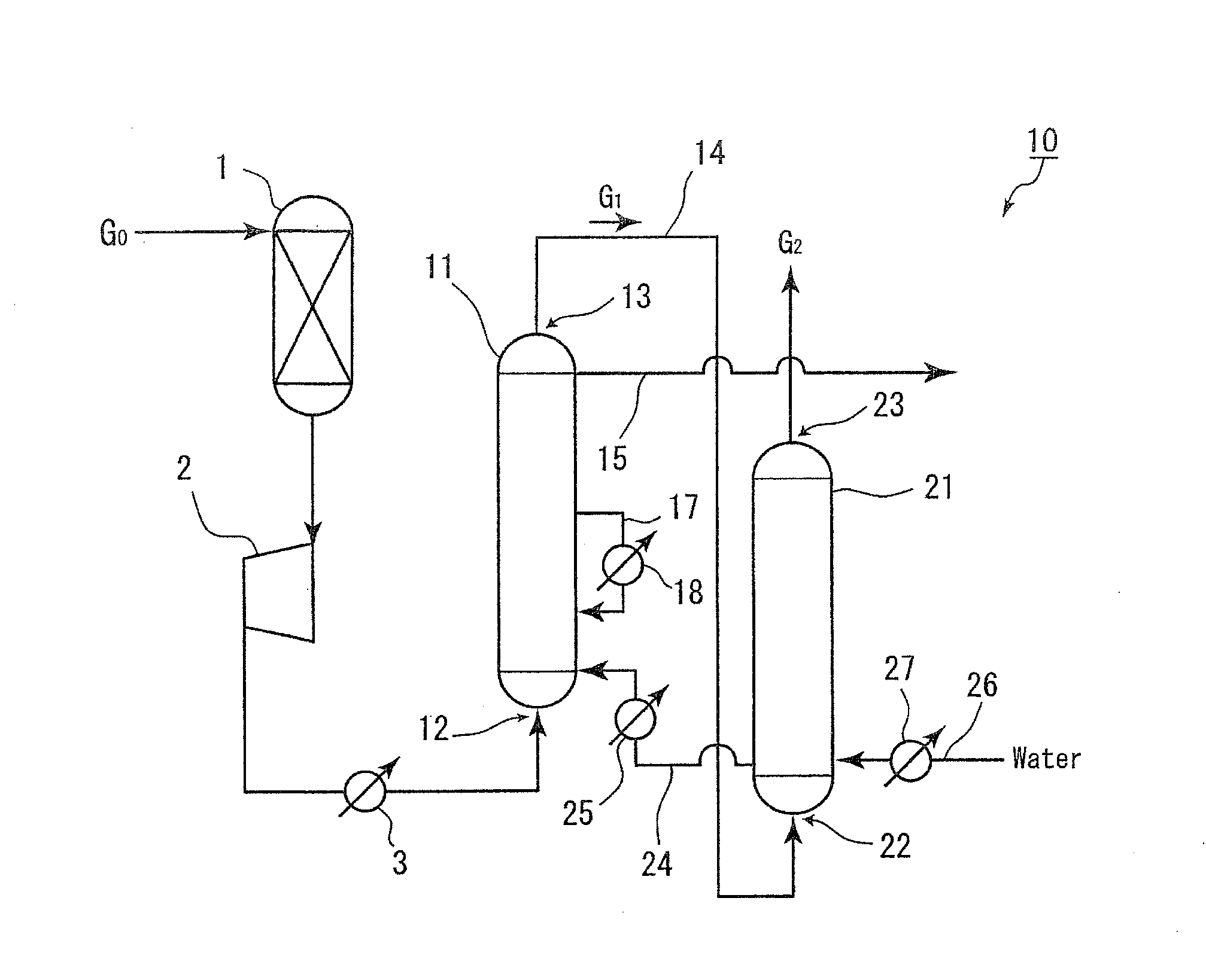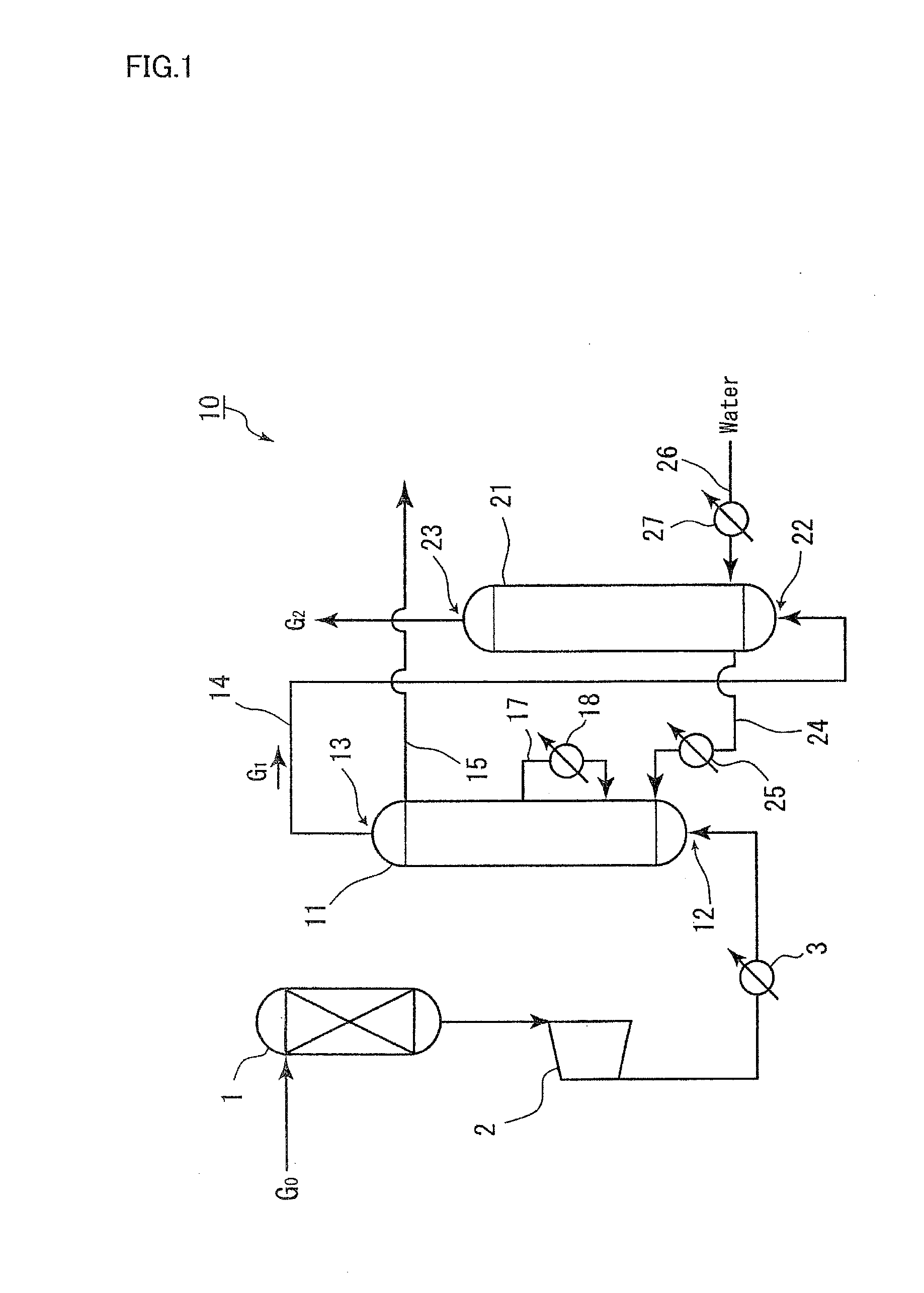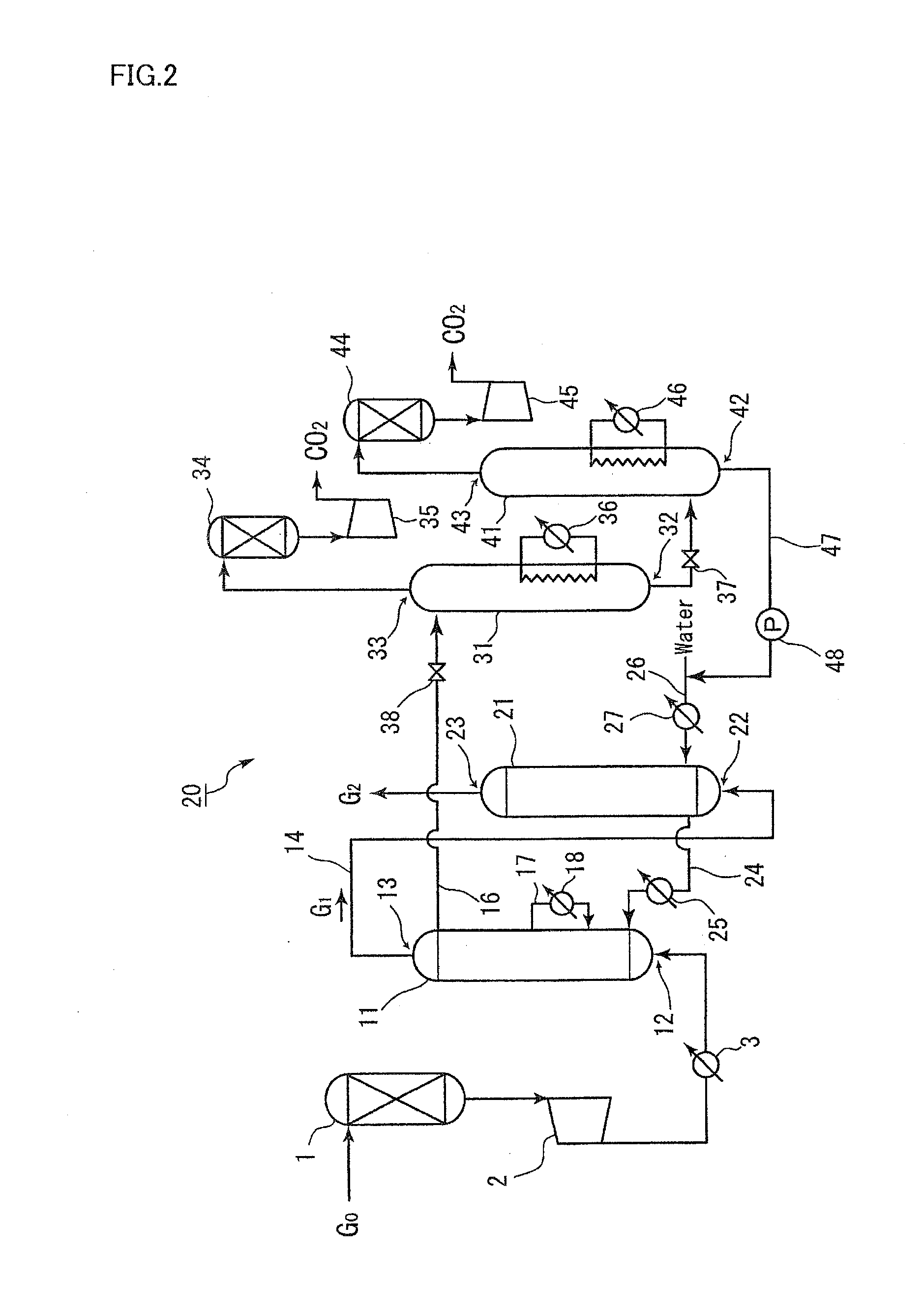Carbon Dioxide Separation Unit and Carbon Dioxide Separation Method
- Summary
- Abstract
- Description
- Claims
- Application Information
AI Technical Summary
Benefits of technology
Problems solved by technology
Method used
Image
Examples
example 1
[0035]A carbon dioxide separator 10 related to the present example includes a carbon dioxide hydrate formation part 11 that forms carbon dioxide hydrate from a gas to be treated G0 containing carbon dioxide and water as a raw material. The gas to be treated G0 is, after conditioned to predetermined temperature and pressure (6 to 9 MPa and 1 to 2° C., for example) by a compressor 2 and a cooler 3, introduced from an inlet of a gas to be treated 12 disposed under the carbon dioxide hydrate formation part 11 into the inside of the carbon dioxide hydrate formation part 11. When the pressure of the gas to be treated G0 is high, the compressor 2 can be eliminated. Further, in order to remove moisture contained in the gas to be treated G0, a dehydrator 1 for the gas to be treated is preferably disposed prior to the carbon dioxide hydrate formation part 11.
[0036]The inside of the carbon dioxide hydrate formation part 11 is set to predetermined pressure and temperature where carbon dioxide h...
example 2
[0045]In the next place, another example of a carbon dioxide separator related to the present invention will be described. FIG. 2 is a schematic block diagram showing a carbon dioxide separator 20 related to example 2. Like characters represent like members as those of example 1, and description thereof will be omitted. A carbon dioxide separator 20 related to the present example includes, similarly to the example 1, a carbon dioxide hydrate formation part 11 and a carbon dioxide absorption part 21, further on a downstream side thereof, a gas hydrate decomposition part 31 and a carbon dioxide release part 41.
[0046]A slurry of carbon dioxide hydrate formed in the carbon dioxide hydrate formation part 11 is introduced via a line 16 into the gas hydrate decomposition part 31. In the gas hydrate decomposition part 31, a step of decomposing and re-gasifying carbon dioxide hydrate formed in the carbon dioxide hydrate formation part 11 is conducted. The re-gasification of carbon dioxide hy...
example 3
[0053]Next, still another example of a carbon dioxide separator related to the present invention will be described. FIG. 3 is a schematic block diagram showing a carbon dioxide separator 30 related to example 3. Like characters represent like members as those of example 2, and description thereof will be omitted. A carbon dioxide separator 30 related to the present example includes, similarly to the example 2, a carbon dioxide hydrate formation part 11, a carbon dioxide absorption part 21, a gas hydrate decomposition part 31 and a carbon dioxide release part 41, further a dehydrator 51 between the carbon dioxide hydrate formation part 11 and the gas hydrate decomposition part 31.
[0054]In the carbon dioxide hydrate formation part 11, carbon dioxide in a gas to be treated G0 is hydrated to form a carbon dioxide hydrate slurry. In order to efficiently separate carbon dioxide in the gas to be treated G0, a water content of the carbon dioxide hydrate slurry is preferable to be 50 to 95% ...
PUM
| Property | Measurement | Unit |
|---|---|---|
| Pressure | aaaaa | aaaaa |
| Efficiency | aaaaa | aaaaa |
Abstract
Description
Claims
Application Information
 Login to View More
Login to View More - R&D
- Intellectual Property
- Life Sciences
- Materials
- Tech Scout
- Unparalleled Data Quality
- Higher Quality Content
- 60% Fewer Hallucinations
Browse by: Latest US Patents, China's latest patents, Technical Efficacy Thesaurus, Application Domain, Technology Topic, Popular Technical Reports.
© 2025 PatSnap. All rights reserved.Legal|Privacy policy|Modern Slavery Act Transparency Statement|Sitemap|About US| Contact US: help@patsnap.com



